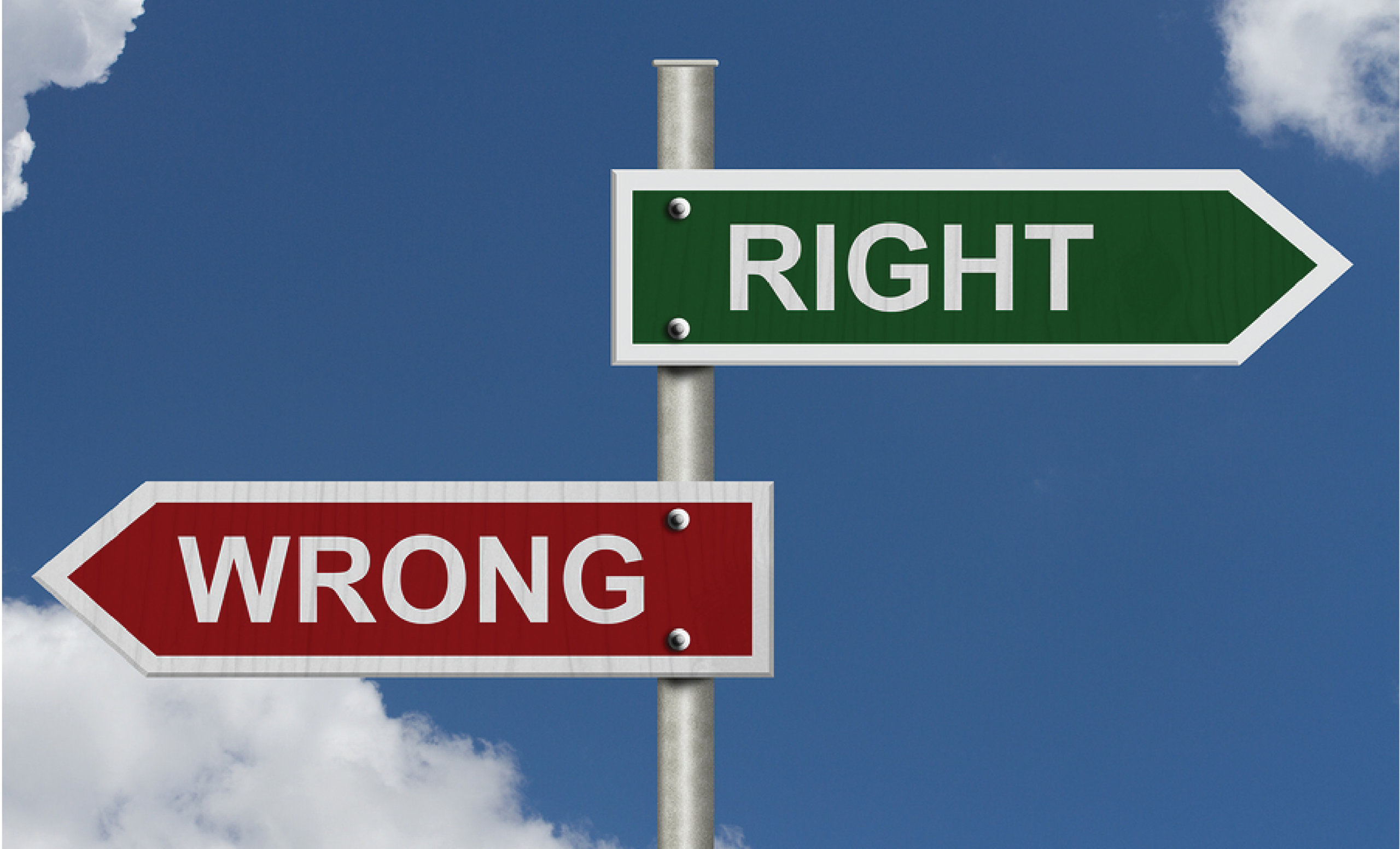What is the Moral to your Litigation Story?
By Eric Rudich, Ph.D
A SPECIAL REPRINT © Entire contents copyright 2017 by CLM Magazine, a publication of The CLM. All rights reserved.
It is axiomatic that trial attorneys must offer a compelling story at trial. There are good reasons for trial attorneys to present their cases in story form. Research has consistently shown that stories are more likely to be comprehended and recalled. Moreover, when information is not presented in story form, people tend to reorganize the information into stories anyway. The danger of not providing stories at trial is that jurors will create their own stories to fit the evidence and to fill any gaps which may be inconsistent with your client’s position.
Trial jurors are in a unique position as they are not passive listeners to each side’s litigation story. Rather, jurors are active participants who will ultimately determine how the story ends. Based on their verdict decisions, jurors will need to make moral judgments about who should win and the amount of damages, if any, that should be awarded. If jurors relied on the same moral judgments for making verdict decisions, however, jurors would all agree on the trial outcome. This, of course, rarely occurs which demonstrates that although jurors are presented with the same arguments and evidence at trial, they often use different moral judgements for making verdict decisions.
Moral Foundation Theory
Moral Foundations Theory provides a framework for understanding why jurors can have very different views about which side should prevail in a case. The theory proposes that moral judgements have evolved from our innate sense of suffering, fairness, and cheating which arose from intergroup and intra-group conflict in our ancestral environment. From an evolutionary perspective, morality facilitated intra-group cooperation among individuals which in turn offered survival advantages over other groups that competed for the same resources.
Recent research suggests that moral judgments are made automatically and are based on emotion rather than deliberate reasoning. In other words, people make decisions based on what feels right first and then seek out information to support their views. The theory states that people use five foundations for making moral decisions which are based on our motives for group inclusion and cohesiveness. These moral foundations are based on concerns for care versus harm, fairness versus cheating, loyalty versus betrayal, authority versus subversion, and sanctity versus degradation.
Fundamental to the theory is that people differ in their use of these moral foundations for making decisions. In his book “The Righteous Mind: Why Good People are Divided by Politics and Religion,” Jonathan Haidt, a social psychologist from the University of Virginia, demonstrates that differences in voters’ reliance on these moral foundations account for their voting preferences. For example, compared to conservatives, liberals are more concerned with moral issues involving harm and fairness. In contrast, conservatives’ view morality through the prisms of authority and sanctity. These differences explain why liberals focus more on issues involving justice while conservatives are more persuaded by messages that center on authority, rules and protecting vital institutions.
Similarly, jurors’ will offer differ in the extent to which they use these five moral foundations for determining the outcome of a trial. In a personal injury case, some jurors will be more sensitive to issues involving care versus harm and will be predisposed to be more sympathetic to the plaintiff and to punish the defendant. Other jurors’ moral judgements may be based more on issues involving authority versus subversion. Such jurors may be more attuned to whether the plaintiff and defendant followed rules and industry guidelines. Below is a description of each of the five moral foundations and how different case types lend themselves to the application of different moral foundations.
Five Moral Foundations in Litigation
1. Care/harm: This moral foundation relates to our role as individuals to care for others. Underlying this moral foundation are virtues such as kindness, empathy, and nurturance. Jurors will use this moral foundation to determine whether defendants acted safely and in the interest of the general public. Cases in which this moral foundation is used by jurors tend involve insurance defense, catastrophic accidents, and product liability matters.
2. Fairness/cheating: This moral foundation is based on individuals’ expectations that altruistic acts will be reciprocated. In other words, people expect that any help provided to others will eventually be returned if needed. Individuals who use this moral foundation are concerned with issues such as justice and fairness. Anti-trust and trade secret cases often deal with these issues as they pertain to whether defendants acted fairly or cheated in order to obtain a competitive advantage.

3. Loyalty/betrayal. The basis for this moral foundation stems from our evolutionary history of living in groups. Accordingly, this moral foundation is based on individuals’ need for a sense of belonging and their fear of rejection. This moral foundation may be relevant in contract cases when one party betrayed the other when they decided to leave the relationship. Patent cases may also involve issues reflecting loyalty and betrayal as one party may be perceived as copying or stealing ideas from their competitor.
4. Authority/subversion. There is a hierarchy within most social and professional groups. The underlying virtues of this moral foundation are respect for rules and leaders as well as deference to authority and traditions. Employee litigation may involve issues pertaining to whether an employee disregarded company policies or an employer abused their authority. As mentioned above, many other types of litigation involve issues relating to whether one or both parties followed rules and/or industry guidelines and thus acted appropriately.
5. Sanctity/degradation: This foundation is based on our visceral reaction to avoid activities and contaminants that disgust individuals. From an evolutionary perspective, this allows individuals to evade potentially harmful activities that could cause injury or death. In the legal context, disgust can be observed when criminals are referred to as “scum.” Disgust may also be evoked in many types of civil cases. Jurors may experience disgust when observing horrific injuries resulting from catastrophic accidents or cases involving corporate greed and misconduct. In environmental cases, disgust may be experienced when hearing about instances of companies illegally polluting and dumping.
Identifying the Moral to Your Litigation Story
Depending on the nature of the case, jurors will use one or more moral foundations for making verdict decisions. Research on voters has shown that individuals differ in their use of these moral foundations which account for their liberal versus conservative orientation. Similarly, jurors will rely on different moral foundations for making verdict decisions. For example, some jurors will be more sensitive to issues involving care and harm while other jurors may be more rules-driven and determine case outcomes based on their moral beliefs about authority and subversion.
Attorneys may further bolster their case by framing arguments using specific terminology that resonate with a particular moral foundation. Research conducted on these moral foundations has shown that individuals use specific language that describe these moral foundations in terms of virtues and vices. As such, attorneys may utilize this research to develop themes and storylines craft messaging which describes their client’s actions in a positive light while setting a negative moral tone for their adversary’s behavior. The language used to describe a particular moral foundation may be used through trial by using such terminology during openings, witness questioning, closing arguments and with any accompanying demonstratives.
Implications for Claims Professionals
In-house counsel and claims professionals evaluate thousands of cases each year and they need to make decisions concerning which cases to potentially take to trial, which to settle very early soon after a claim is filed, and which to settle before a claim is even filed. These decisions need to be made early in the litigation process to avoid any risk to the company, including monetary, company reputation and financial uncertainty. When evaluating cases, claims professionals typically compare historical jury verdicts with the facts of the current cases to make settlement decisions. However, the research discussed in this article suggests that claims professionals must also consider whether the claimant’s story will resonate with the moral foundation(s) that jurors will use to make verdict decisions.
As discussed, jurors’ decisions will be based on the corporate story told at trial and the moral foundations that jurors use to make verdict decisions. If the defendant’s story resonates with these moral foundations, jurors will likely decide the case favorably. However, if there are gaps in their story and/or weaknesses that cannot be explained, jurors will evaluate the case in terms of harm to the plaintiff, cheating, betrayal and other moral judgements to find in in favor of the plaintiff and award damages. Settlement decisions should then be made in the context of the moral judgements that jurors will use to ultimately decide a case.
Conclusion
Understanding the moral foundations that jurors will use is critical for claims professionals. A deeper understanding of jury decision making will help them make litigation decisions early in the litigation process. For cases that proceed to trial, it is critical to not only develop a story but to determine the moral modalities that jurors will use to decide the case. Because moral judgements are based on emotion and occur automatically, attorneys need to identify the profiles of jurors that will rely on these moral foundations for making verdict determinations. These jurors are the most likely to be emotionally-driven and the strongest advocates for or against your client during deliberations. Attorneys may also resonate with jurors by using specific language that drives them to use a specific moral foundation for making verdict determinations. By identifying the moral foundations for making verdict decisions, attorneys are much better able to identify jurors favorable to their case and to craft the themes and trial story that will most appeal to jurors at trial.



